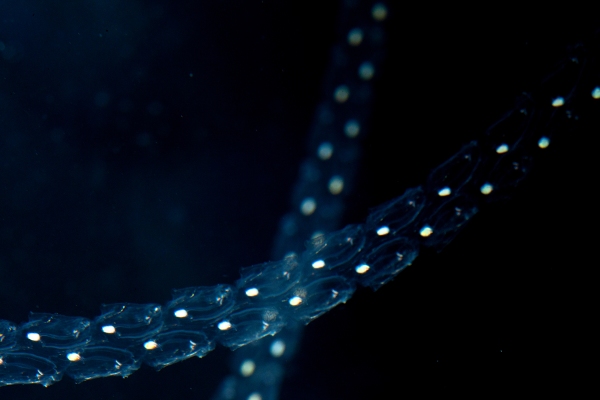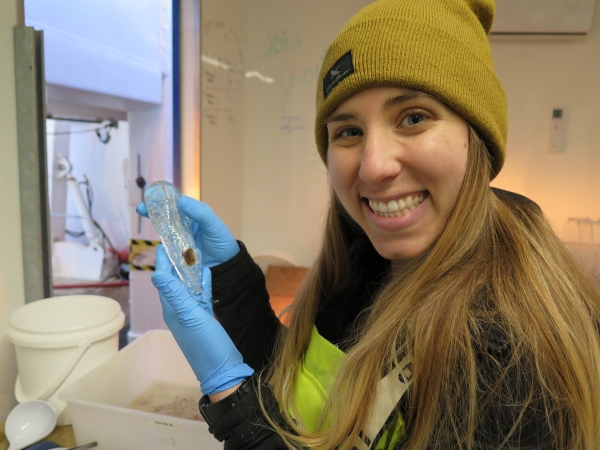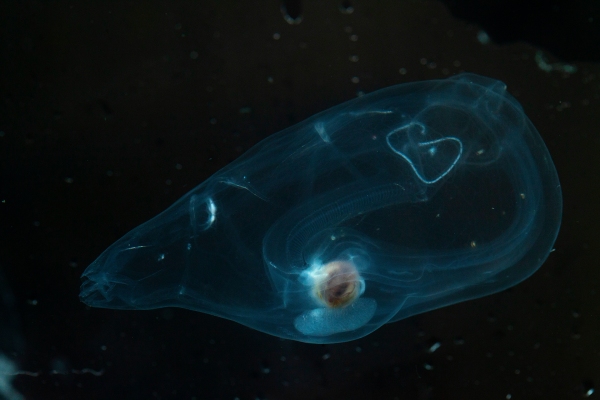4 November 2018. By Voyage Leader Dr Moira Decima.
Our recent goal has been to conduct a “control” cycle in water with either a complete absence of salps or background abundances of these organisms.
We want to conduct these experiments in similar cold Subantarctic water that is otherwise the same as the water we studied during our salp cycle 1. Unfortunately, we’ve had trouble finding water without salps! Every time we put a net in the water we catch some of our squishy friends.
We eventually decided to conduct our next experimental cycle in a region with relatively low abundances of salps and with a more diverse community.
Instead of the Salpa thompsoni community that we sampled during Cycle 1, we now have a community with a more even distribution of four types of salps: S. thompsoni, Pegea confoederata, Soestia zonaria, and Thetys vagina.
We are also now finding far more crustaceans in our net tows than we did during cycle 1 and Morgan has started an experiment to measure copepod grazing rates.
In other news, at the end of the last cycle we started an incubation with an S. thompsoni oozooid (solitary life stage). While we were incubating it to measure its grazing rates, it released its stolon, which means it gave birth to a chain of baby blastozooids.
We’ve now been incubating the tiny chain for three days and watching it as it grows. Mike and I feel like grandparents watching these blastozooids grow up while they lazily swim around their tank.




